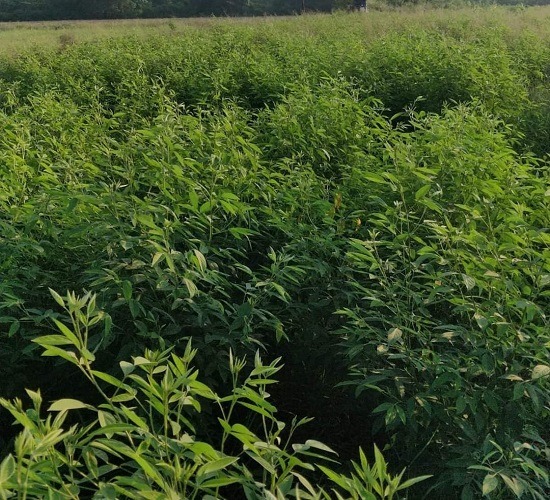
Kanpur, July 13, (HS). Arhar is the main pulse crop of our country which is mainly sown in the Kharif season in July. Along with pulse production, Arhar crop also increases soil fertility and productivity by stabilizing 150 to 200 kg of atmospheric nitrogen. This information was given by Dr. Akhilesh Mishra, scientist of the pulse section of Chandrashekhar Azad University of Agriculture and Technology, Kanpur on Saturday.
He said that farmers will benefit more by cultivating late pigeon peas using scientific methods. Cultivation of pigeon peas can prove to be beneficial in non-irrigated and dry areas.
Know which vitamins are present in pigeon peas
Dr Akhilesh Mishra said that 100 grams of pigeon pea provides energy- 343 kilo calories, carbohydrates- 62.78 grams, fiber- 15 grams, protein- 21.7 grams and vitamins like thiamine (B1)- 0.643 mg, riboflavin (B2)- 0.187 mg, niacin (B3)- 2.965 mg, and minerals like calcium 130 mg, iron 5.23 mg, magnesium 183 mg, manganese 1.791 mg, phosphorus 367 mg, potassium 1392 mg, sodium 17 mg and zinc 2.76 mg etc. in abundance. Which is very beneficial for human health.
Dr Mishra has advised the farmers that the improved varieties of pigeon pea are Narendra pigeon pea-2, Azad pigeon pea, Amar, Pusa-9, Bahar, Malviya-13, Malviya-6 and IPA-203. Pigeon pea seeds should be sown at the rate of 15 to 18 kg per hectare by keeping the distance between rows 60-75 cm and the distance between plants 20 to 25 cm. For prevention of diseases, before sowing, the seeds should be treated with Trichoderma viridi 10 grams per kg or thiram and 1 gram carbendazim, after which, treat with 5 grams of rhizobium + 5 grams of PSB culture per kg of seed and then sow.
He said that before sowing, 20 kg nitrogen, 50 kg phosphorus, 20 kg potash and 20 kg sulphur should be applied under the seed per hectare. Mixing 25 kg zinc sulphate in the field at the time of final ploughing increases the crop yield. If farmers cultivate pigeon pea scientifically, then the production of pigeon pea is 12 to 16 quintals per hectare in non-irrigated areas and 22 to 25 quintals per hectare in irrigated areas.
 look news india
look news india